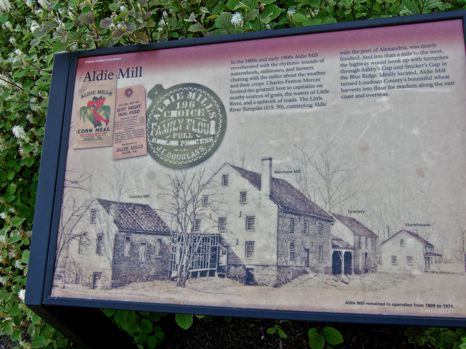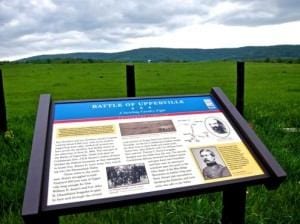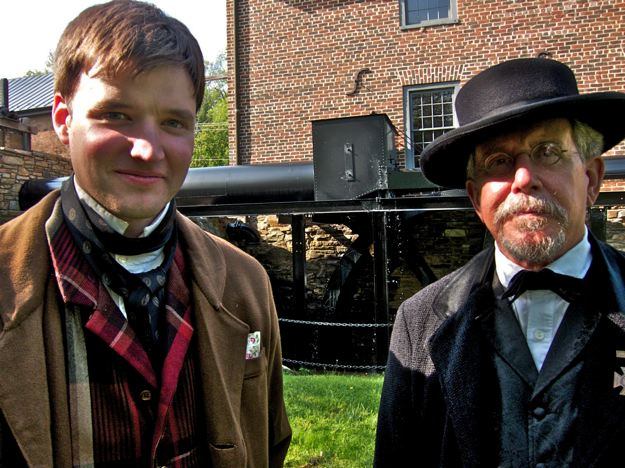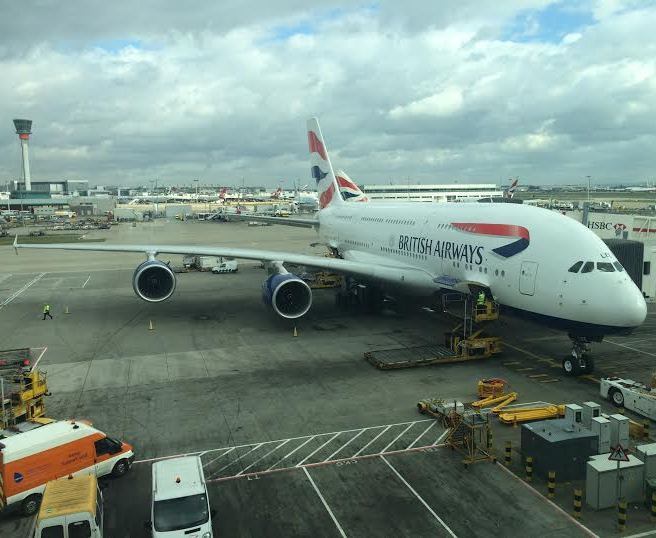This year marks the 150th anniversary of the Civil War, which means that popular sites like Gettysburg, Antietam, Bull Run and Fort Sumter may be overrun with tour buses and crowds.
Virginia, which was home to a third of all Civil War battles, is a less frequently explored, but equally historic alternative.
Contributing writer David Latt brings you on a tour of Civil War special events, exhibits, recreations and reenactments in Loudoun County, Virginia.
As any history buff will tell you, Virginia was the center of the Civil War.
For the Confederate Army, Virginia was the border state that put you within striking distance of Washington, D.C. For the North, the capital of the Confederacy in Richmond, Virginia was a tempting target.
Twenty-five miles west of Washington, DC, Loudoun County offers many advantages for travelers who want to visit Civil War sites.
 The memorial sites in the county include Mt. Zion Church, Ball’s Bluff, Aldie Mill, Morven Park, Oatlands, the Quaker village of Waterford, and the Red Fox Inn.
The memorial sites in the county include Mt. Zion Church, Ball’s Bluff, Aldie Mill, Morven Park, Oatlands, the Quaker village of Waterford, and the Red Fox Inn.
Even before visiting in person, online sites offer an immersive experience with videos and 360-panoramas of Civil War locations. For an overview of the conflict, “A Citizen’s Guide to Loudoun and the Civil War” lays out the history clearly and can be requested from the contact section of the Visit Loudoun Web site. Included on the Loudoun site are links to Guided and Self-Guided Heritage Tours with itineraries organized around day trips.
Meanwhile, the Northern Virginia Regional Parks Association also has links to Civil war events and sites.
Local historian Richard Gillespie recommends combining history with pleasure. He encourages visitors to mix visits to Civil War historical sites with horse country events.
He also recommends eating at local restaurants like the Hunter’s Head Tavern or the Red Fox Inn where Confederate spies held strategy meetings.
Learn more about traveling locally with Loudoun County Restaurants: Northern Virginia’s Culinary Scene.
Loudoun County plays host to re-enactments to commemorate events that happened 150 years ago.
Of particular note was the Battle of Ball’s Bluff, a traumatic defeat for the Union army which underestimated the size of the Confederate force that had gathered around Leesburg. Forced back along the bluff, hundreds of Union soldiers drowned when they were driven off the bluff into the Potomac River below.
On Saturday, October 22, 2011, the battle will be re-enacted by 1,000 participants. Attendance will be limited to 3,000.
Traveling through Loudoun, you will doubtlessly encounter the name Colonel John S. Mosby, otherwise known as the “Gray Ghost.” An early practitioner of what today we call special forces, Mosby was a Confederate officer who asked to be assigned to Loudoun County so he could harass Union forces using hit and run tactics. He argued that a small, aggressive force would create such havoc that valuable resources and manpower would have to be diverted to track him down.
The Union army dedicated more than 14,000 soldiers in an unsuccessful effort to capture Mosby and his Rangers. Mosby’s exploits were so legendary that Route 50 was named the John S. Mosby Highway.
Find more places to learn about American history: Video: Civil War Travel
 Except for a plaque or marker, many Civil War battle sites are undistinguished.
Except for a plaque or marker, many Civil War battle sites are undistinguished.
A meadow with peacefully grazing cattle might have once been the site of a horrific battle where hundreds of lives were lost.
Or a church with peeling paint could turn out to be where Confederate spies gathered to plan an important attack on Union forces.
The Aldie Mill on Route 50 looks like many other mills in the area unless you visit during one of the historic reenactments.
Interacting with the men or women dressed in period costumes makes Civil War history come alive in a dramatic fashion. The “historical representatives” take on the character of real people from the period.
On a recent visit, C.M. Piggott, a retired government worker from nearby Purcellville was dressed as a member of Mosby’s Rangers and talked about Mosby’s surprise capture of a troop of Union soldiers who were garrisoned at the mill.
Get more travel ideas in our Cultural Travel section
 Blaine A. Horton, a young teacher from North Folk, told the story of Daniel Dangerfield, a slave who escaped from the mill five years before the start of the Civil War.
Blaine A. Horton, a young teacher from North Folk, told the story of Daniel Dangerfield, a slave who escaped from the mill five years before the start of the Civil War.
Eventually, Dangerfield was captured in Philadelphia where he was living as a free man. The plantation owner who said Daniel belonged to him wanted him returned to slavery. The ensuing hearing in Philadelphia led to such civil unrest by Abolitionists that the judge-commissioner ruled against the plantation owner.
Standing in front of the mill’s quietly turning water wheel, it’s hard to guess at that history without the help of an historical representative.
Visiting Loudoun puts a personal point of view on the war that transformed us from “we the states” to “we the people.”
Text and photos by David Latt for PeterGreenberg.com. Visit David on the Web at MenWhoLiketoCook.com.
Related Links on PeterGreenberg.com:












